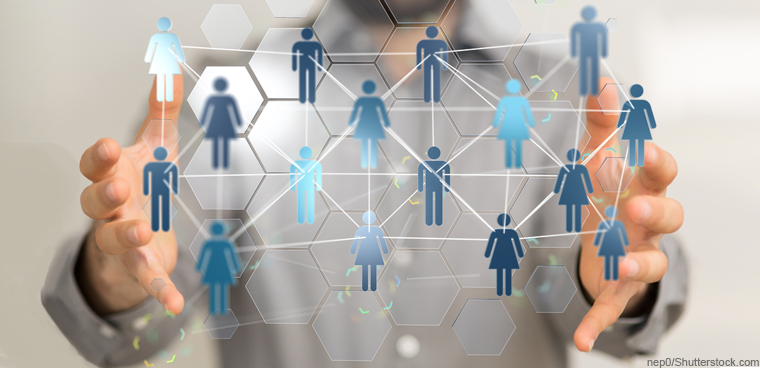Developing an agency brand to modernize HR

Agencies can use data to identify and assemble information on candidates' and employees' experiences to better understand how people perceive them as an employer, as well as how to potentially streamline outdated processes.

The federal government offers job security, generous benefits, a strong sense of service and missions with impact. Yet, many job seekers struggle to recognize the value of becoming a federal employee.
To change this perspective, federal agencies can use recruiting practices and revamped communications that will better attract and retain talent. By reimagining how they recruit candidates and enhance the employee experience, government leaders can look to the best practices of federal information technology leaders and the private sector as a model for their own "HR modernization."
For federal IT leaders, "modernization" is a priority. In December 2017, the Modernizing Government Technology (MGT) Act was signed into law and in the years since, a number of agencies have begun translating the MGT Act's recommendations into action.
Imagine a commensurate effort to "modernize" federal human resources and talent strategies, one that incorporates effective employer branding, and shapes all the ways in which organizations present themselves to both recruits and existing employees. By implementing an HR modernization strategy, agencies can begin using employer branding as a catalyst to develop and deploy a stronger identity – increasing engagement and improving the return on their talent investments.
Modernization across generations
The need to modernize HR becomes especially crucial when looking at the future of the federal workforce – Generation Z.
Consider the generational breakdown in certain mission-critical roles. More than 52% of federal IT specialists are over age 50, according to the Partnership for Public Service, while just 2.8% are under 30. Among contract specialists, almost 39% are over 50 and only 6.6% are under 30.
As federal agencies consider reaching new talent, modernization helps better prepare for the future to meet the needs of the newest generation of job seekers, while also immediately benefitting current employees and applicants.
To truly modernize, government leaders can consider fundamentally rethinking how they communicate their brand to engage with prospective and current talent. To accomplish this, agencies can:
- Collect interview and survey data from employees and other stakeholders to better understand brand perceptions and values alignment.
- Become more proactive in leveraging digital tools as they seek to woo the digital-native candidate and improve HR processes.
- Optimize the recruitment process to put the candidate experience first – for both external jobseekers and current employees seeking growth.
Use data to craft the employer brand
Employer branding is key to a successful HR transformation. The private sector knows this already: 72% of recruiting leaders say their brand has a significant impact on their hiring efforts.
Just as IT modernization often starts with an inventory of both current capabilities and long-term needs, employer branding begins with an internal analysis.
Agencies can harness the power of survey data to understand employees' needs, wants, and values, such as:
- Why they chose to work for the agency
- Why longer-tenured employees have stayed
- What benefits, both tangible and intangible, employees feel they receive
- If employees would refer their friends to work for the agency – and why or why not
This data can support the creation of an authentic Employee Value Proposition (EVP) – the employer's promise to both current and potential employees and the foundation of any employer branding effort.
Through this data, it's possible to construct an EVP that reflects the actual employee experience in the workplace.
Put digital channels at the core of employer branding efforts
Federal IT modernization tries to incorporate more advanced and flexible technological capabilities; HR can strive for the same. Given that 79% of job seekers are likely to use social media in their job hunt, expanding digital communication is crucial when modernizing federal recruiting and communications efforts.
Agencies can enhance their social media and digital presence to help potential recruits – especially Gen Z – discover the benefits of federal employment and inspire them to apply. Further, a digitally focused brand can also facilitate employee engagement by fostering community and advocacy.
Job seekers increasingly seek a seamless, mobile-friendly application process. A positive, user-centered digital intake process shows that the agency is technologically savvy and ensures that applicants stay informed and feel prepared for next steps.
Create a human-centric recruiting process
IT modernization emphasizes a streamlined customer experience. Likewise, HR modernization can help recruitment by centering the potential applicant and injecting more personalization throughout the process.
To do this, agencies needs to investigate how to better identify and target likely applicants, as well as increase customization of internal activities and communications.
Effective employer branding helps define audience needs and allows an organization to design and implement more cogent user-centric solutions.
Any federal agency can take steps today toward HR modernization.
Data is key. Agencies can identify and assemble information on candidates' and employees' experiences to better understand how people perceive them as an employer, as well as how to potentially streamline outdated processes. Data can also drive brand strategies and messaging to help job seekers see greater value in federal employment.
With an EVP that authentically reflects the agency's mission, values, and culture, alongside a greater emphasis on digital tools and improving the candidate and employee experience, an agency can begin the process of HR modernization. To be successful in this effort, it's essential that government agencies begin to establish their employer brand to not only attract key talent but retain a productive workforce.
NEXT STORY: Congress axes CMO office in 2021 defense bill


